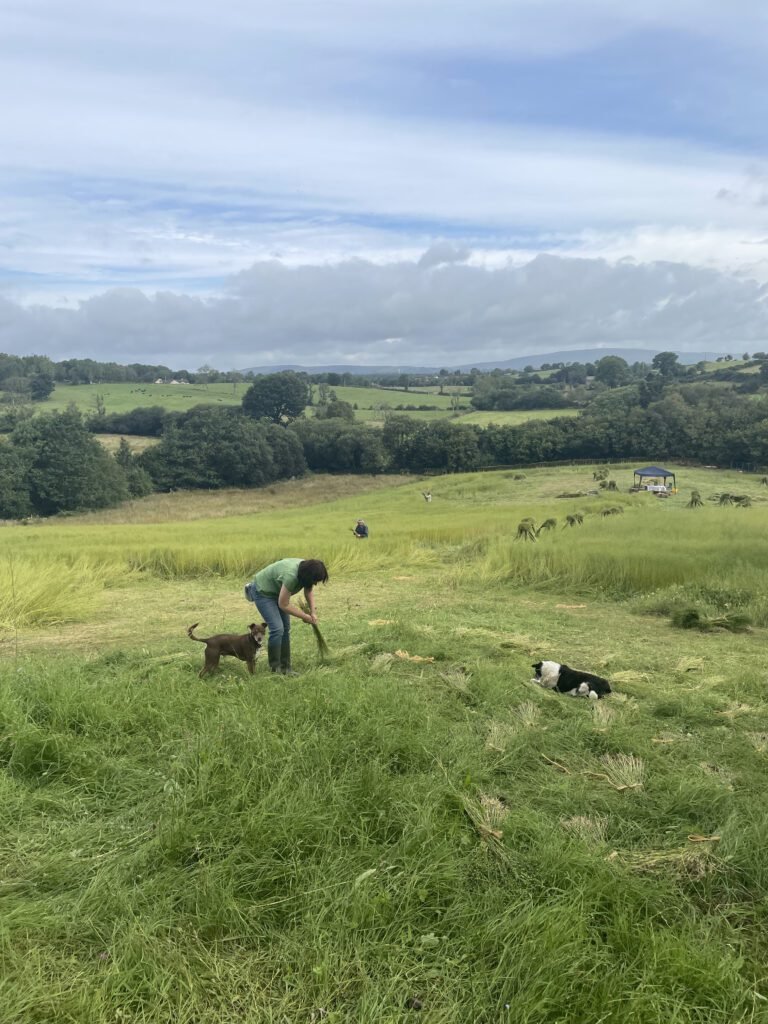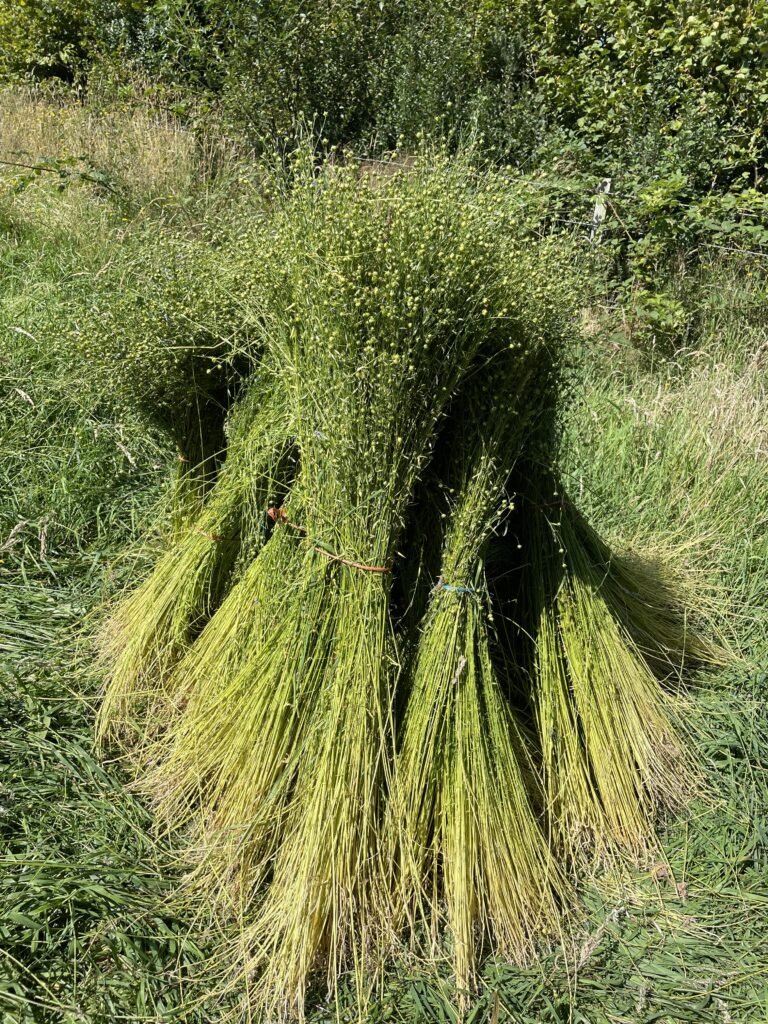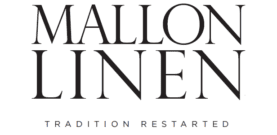
Traditionally, flax is harvested 100 days after being sown. So far that has been our experience here at Mallon Farm, in County Tyrone, Northern Ireland. However, in 2021, a mix of strong sunshine and heavy rain meant that the flax ripened quicker than usual and some collapsed under the rain. So we made the decision to start the flax harvest a bit earlier than we had originally planned. If left, the fallen flax may have rotted and would have been lost. Once two thirds of the stems have turned yellow and the seed heads have formed, the flax fibre is ripe and ready to harvest. No chemicals or mains water are required for this sustainable crop.
We used the traditional method of hand pulling the flax. This preserves the full length of the flax fibre and it also suits the slope of the fields here. Many friends and family have come along to help us with the flax harvest. For some, it has been their first experience of flax pulling; for others a chance to share years of experience. We lost about a quarter of the crop which lodged, it was our friends and family who saved the day, racing against the weather.
Over the years it has become a bit of a community. We have farmers who remember pulling flax and want to have a go. There is another community of textile artists, students and professionals who want to connect with the land that their material comes from, especially if they have an interest in regenerative textiles. We are also joined by people who enjoy this almost meditative experience in nature. Conversations from the field are the best.

When a bunch of flax has been pulled, it is tied together in a ‘beet’. These can then be stacked upright, traditionally in groups of twelve or thirteen, called ‘stooks’. We also hang beets around the fences of the farm as this is an ideal spot for drying.
If dew retting, the flax would be laid flat out across the field during the flax harvest. We have found that tank retting is more suited to our climate and scale of production. This means the flax must be dried before being submerged in harvested rainwater in our upcycled cheese vat.
There has been plenty of hard work and great craic in the field over the weeks of the harvests. We are grateful to all who showed up to lend a hand.
If you’d like to join us for this year’s flax harvest sign up for our newsletter on the homepage to get notified of dates for open days or check our flax harvest events.
